Sams Teach Yourself Xcode 4 in 24 HoursJohn Ray, William Ray In just 24 sessions of one hour or less, Sams Teach Yourself Xcode 4 in 24 Hours will help you achieve breakthrough productivity with Apple’s new Xcode 4.3+ development environment for OS X and iOS devices. Every lesson introduces new concepts and builds on what you’ve already learned, giving you a rock-solid foundation for real-world success!
Step-by-step instructions carefully walk you through the most common Xcode 4 development tasks.
Quizzes and Exercises at the end of each chapter help you test your knowledge.
By the Way notes present interesting information related to the discussion.
Did You Know? tips offer advice or show you easier ways to perform tasks.
Watch Out! cautions alert you to possible problems and give you advice on how to avoid them.
Printed in full color–figures and code appear as they do in Xcode 4.3+Master the MVC design pattern at the heart of iOS and OS X development Use Xcode project templates to get a head start on advanced application features Efficiently use the Xcode Code Editor and get fast, contextually-aware answers with the built-in help system Use iOS Storyboards to visually describe an application’s workflow Get started with Core Data to simplify data management and data-driven user interfaces Use frameworks and libraries to package functionality and promote time-saving code reuse Use Git and Subversion source control for managing distributed projects Prepare Unit tests and use the Xcode debugger to keep your projects error free Package your apps for the App Store Use the command-line Xcode tools for scripting and build automation Concurrent Programming: Algorithms, Principles, and FoundationsMichel Raynal The advent of new architectures and computing platforms means that synchronization and concurrent computing are among the most important topics in computing science. Concurrent programs are made up of cooperating entities — processors, processes, agents, peers, sensors — and synchronization is the set of concepts, rules and mechanisms that allow them to coordinate their local computations in order to realize a common task. This book is devoted to the most difficult part of concurrent programming, namely synchronization concepts, techniques and principles when the cooperating entities are asynchronous, communicate through a shared memory, and may experience failures. Synchronization is no longer a set of tricks but, due to research results in recent decades, it relies today on sane scientific foundations as explained in this book.
In this book the author explains synchronization and the implementation of concurrent objects, presenting in a uniform and comprehensive way the major theoretical and practical results of the past 30 years. Among the key features of the book are a new look at lock-based synchronization (mutual exclusion, semaphores, monitors, path expressions); an introduction to the atomicity consistency criterion and its properties and a specific chapter on transactional memory; an introduction to mutex-freedom and associated progress conditions such as obstruction-freedom and wait-freedom; a presentation of Lamport's hierarchy of safe, regular and atomic registers and associated wait-free constructions; a description of numerous wait-free constructions of concurrent objects (queues, stacks, weak counters, snapshot objects, renaming objects, etc.); a presentation of the computability power of concurrent objects including the notions of universal construction, consensus number and the associated Herlihy's hierarchy; and a survey of failure detector-based constructions of consensus objects.
The book is suitable for advanced undergraduate students and graduate students in computer science or computer engineering, graduate students in mathematics interested in the foundations of process synchronization, and practitioners and engineers who need to produce correct concurrent software. The reader should have a basic knowledge of algorithms and operating systems. Getting Started with ProcessingCasey Reas, Ben Fry Learn computer programming the easy way with Processing, a simple language that lets you use code to create drawings, animation, and interactive graphics. Programming courses usually start with theory, but this book lets you jump right into creative and fun projects. It's ideal for anyone who wants to learn basic programming, and serves as a simple introduction to graphics for people with some programming skills.
Written by the founders of Processing, this book takes you through the learning process one step at a time to help you grasp core programming concepts. You'll learn how to sketch with code — creating a program with one a line of code, observing the result, and then adding to it. Join the thousands of hobbyists, students, and professionals who have discovered this free and educational community platform. Quickly learn programming basics, from variables to objectsUnderstand the fundamentals of computer graphicsGet acquainted with the Processing software development environmentCreate interactive graphics with easy-to-follow projectsUse the Arduino open source prototyping platform to control your Processing graphics Make: Getting Started with Processing: A Hands-On Introduction to Making Interactive GraphicsCasey Reas, Ben Fry Processing opened up the world of programming to artists, designers, educators, and beginners. This short book gently introduces the core concepts of computer programming and working with Processing. Written by the co-founders of the Processing project, Reas and Fry, Getting Started with Processing shows you how easy it is to make software and systems with interactive graphics. If you're an artist looking to develop interactive graphics programs or a programmer on your way to becoming an artist, this book will take you where you want to go. Updated with new material on graphics manipulation, data, and for the latest version of Processing. Understanding and Using C PointersRichard M. Reese Improve your programming through a solid understanding of C pointers and memory management. With this practical book, you’ll learn how pointers provide the mechanism to dynamically manipulate memory, enhance support for data structures, and enable access to hardware. Author Richard Reese shows you how to use pointers with arrays, strings, structures, and functions, using memory models throughout the book.
Difficult to master, pointers provide C with much flexibility and power—yet few resources are dedicated to this data type. This comprehensive book has the information you need, whether you’re a beginner or an experienced C or C++ programmer or developer. Get an introduction to pointers, including the declaration of different pointer typesLearn about dynamic memory allocation, de-allocation, and alternative memory management techniquesUse techniques for passing or returning data to and from functionsUnderstand the fundamental aspects of arrays as they relate to pointersExplore the basics of strings and how pointers are used to support themExamine why pointers can be the source of security problems, such as buffer overflowLearn several pointer techniques, such as the use of opaque pointers, bounded pointers and, the restrict keyword Getting Started with BeagleBone: Linux-Powered Electronic Projects With Python and JavaScriptMatt Richardson Many people think of Linux as a computer operating system, running on users' desktops and powering servers. But Linux can also be found inside many consumer electronics devices. Whether they're the brains of a cell phone, cable box, or exercise bike, embedded Linux systems blur the distinction between computer and device.
Many makers love microcontroller platforms such as Arduino, but as the complexity increases in their projects, they need more power for applications, such as computer vision. The BeagleBone is an embedded Linux board for makers. It's got built-in networking, many inputs and outputs, and a fast processor to handle demanding tasks. This book introduces you to both the original BeagleBone and the new BeagleBone Black and gets you started with projects that take advantage of the board's processing power and its ability to interface with the outside world. Building Machine Learning Systems with PythonWilli Richert, Luis Pedro Coelho In Detail
Machine learning, the field of building systems that learn from data, is exploding on the Web and elsewhere. Python is a wonderful language in which to develop machine learning applications. As a dynamic language, it allows for fast exploration and experimentation and an increasing number of machine learning libraries are developed for Python.
Building Machine Learning system with Python shows you exactly how to find patterns through raw data. The book starts by brushing up on your Python ML knowledge and introducing libraries, and then moves on to more serious projects on datasets, Modelling, Recommendations, improving recommendations through examples and sailing through sound and image processing in detail.
Using open-source tools and libraries, readers will learn how to apply methods to text, images, and sounds. You will also learn how to evaluate, compare, and choose machine learning techniques.
Written for Python programmers, Building Machine Learning Systems with Python teaches you how to use open-source libraries to solve real problems with machine learning. The book is based on real-world examples that the user can build on.
Readers will learn how to write programs that classify the quality of StackOverflow answers or whether a music file is Jazz or Metal. They will learn regression, which is demonstrated on how to recommend movies to users. Advanced topics such as topic modeling (finding a text’s most important topics), basket analysis, and cloud computing are covered as well as many other interesting aspects.
Building Machine Learning Systems with Python will give you the tools and understanding required to build your own systems, which are tailored to solve your problems. Approach
A practical, scenario-based tutorial, this book will help you get to grips with machine learning with Python and start building your own machine learning projects. By the end of the book you will have learnt critical aspects of machine learning Python projects and experienced the power of ML-based systems by actually working on them. Who this book is for
This book is for Python programmers who are beginners in machine learning, but want to learn Machine learning. Readers are expected to know Python and be able to install and use open-source libraries. They are not expected to know machine learning, although the book can also serve as an introduction to some Python libraries for readers who know machine learning. This book does not go into the detail of the mathematics behind the algorithms.
This book primarily targets Python developers who want to learn and build machine learning in their projects, or who want to provide machine learning support to their existing projects, and see them getting implemented effectively. | Application Development with Qt Creator - Second EditionRay Rischpater Qt Creator is a cross-platform C++ IDE (Integrated Development Environment) that is part of the Qt project. It is used for building GUI applications that run on Windows, Mac OS X, Linux, Android, and many embedded systems. It includes a visual debugger and a forms designer within an integrated GUI.
Application Development with Qt Creator Second Edition, covers everything you need to know to build cross-platform applications with Qt Creator. It starts by showing you how to get, install, and use Qt Creator, beginning with the basics of how to edit, compile, debug, and run applications. Along the way, you will learn how to use Qt to write cross-platform GUI applications for Mac OS X, Windows, Linux, and Android in C++ and Qt Quick.
You will become proficient with the facets of Qt Creator that make it a valued software development environment for students and professionals alike. Genetik für DummiesTara Rodden Robinson Die Genetik ist eine der Naturwissenschaften, deren Wissen am schnellsten wächst und deren Erkenntnisse ständig in Bewegung und in der Diskussion sind. "Genetik für Dummies" erklärt, was überhaupt hinter diesem spannenden Thema steckt. Die Autorin Tara Rodden Robinson erklärt die Grundlagen der Vererbungslehre wie die Mendelschen Regeln, wie Zellen aufgebaut sind und sie sich teilen. Sie zeigt, wie die DNA aufgebaut ist, wie sie kopiert und richtig in Proteine übersetzt wird. Außerdem geht sie auf die Bedeutung der Genetik in der Humanmedizin ein, wie Genmutationen und Erbkrankheiten entstehen. Sie erläutert, was beim Klonen passiert und was sich überhaupt hinter dem Begriff Gentechnik verbirgt. Auch die heißen Themen wie Stammzellentherapie und der Einsatz der Genetik in der Rechtsmedizin werden behandelt. Digital Filter Designer's Handbook: Featuring C Routines/Book and DiskC. Britton Rorabaugh This hands-on guide for circuit designers, technicians, and students discusses digital filter specification and design techniques. The book's coverage begins with a review of filter design fundamentals, complete with all the necessary mathematical background, and proceeds through the theory, operation, design and implementation of every available type of digital filter. The book compiles practical information from many diverse, technical sources and translates it into plain English. It is extensively cross-referenced and breaks down complicated procedures with step-by-step algorithms. It includes application examples and is accompanied by a disk of design programmes written in the C language. IPython Interactive Computing and Visualization CookbookCyrille Rossant Over 100 hands-on recipes to sharpen your skills in high-performance numerical computing and data science with PythonAbout This Book Leverage the new features of the IPython notebook for interactive web-based big data analysis and visualizationBecome an expert in high-performance computing and visualization for data analysis and scientific modelingA comprehensive coverage of scientific computing through many hands-on, example-driven recipes with detailed, step-by-step explanationsWho This Book Is For
Intended to anyone interested in numerical computing and data science: students, researchers, teachers, engineers, analysts, hobbyists... Basic knowledge of Python/NumPy is recommended. Some skills in mathematics will help you understand the theory behind the computational methods. In Detail
IPython is at the heart of the Python scientific stack. With its widely acclaimed web-based notebook, IPython is today an ideal gateway to data analysis and numerical computing in Python.
IPython Interactive Computing and Visualization Cookbook contains many ready-to-use focused recipes for high-performance scientific computing and data analysis. The first part covers programming techniques, including code quality and reproducibility; code optimization; high-performance computing through dynamic compilation, parallel computing, and graphics card programming. The second part tackles data science, statistics, machine learning, signal and image processing, dynamical systems, and pure and applied mathematics. Learning IPython for Interactive Computing and Data VisualizationCyrille Rossant IPython provides a rich architecture for interactive computing, and as a Python developer you can take advantage of this practical hands-on guide to make yourself an expert. Covers numerical computing, data analysis, and more.
OverviewA practical step-by-step tutorial which will help you to replace the Python console with the powerful IPython command-line interfaceUse the IPython notebook to modernize the way you interact with PythonPerform highly efficient computations with NumPy and PandasOptimize your code using parallel computing and Cython
In Detail
You already use Python as a scripting language, but did you know it is also increasingly used for scientific computing and data analysis? Interactive programming is essential in such exploratory tasks and IPython is the perfect tool for that. Once you’ve learnt it, you won't be able to live without it.
"Learning IPython for Interactive Computing and Data Visualization" is a practical, hands-on, example-driven tutorial to considerably improve your productivity during interactive Python sessions, and shows you how to effectively use IPython for interactive computing and data analysis.
This book covers all aspects of IPython, from the highly powerful interactive Python console to the numerical and visualization features that are commonly associated with IPython.
You will learn how IPython lets you perform efficient vectorized computations, through examples covering numerical simulations with NumPy, data analysis with Pandas, and visualization with Matplotlib. You will also discover how IPython can be conveniently used to optimize your code using parallel computing and dynamic compilation in C with Cython.
"Learning IPython for Interactive Computing and Data Visualization" will allow you to optimize your productivity in interactive Python sessions.
What you will learn from this bookDebug your code from the IPython consoleBenchmark and profile your code from IPythonPerform efficient vectorized computations with NumPyAnalyze data tables with PandasCreate visualizations with MatplotlibParallelize your code easily with IPythonCustomize IPython and create your own magic commandsAccelerate your Python code using dynamic C compilation with Cython
Approach
A practical hands-on guide which focuses on interactive programming, numerical computing, and data analysis with IPython.
Who this book is written for
This book is for Python developers who use Python as a scripting language or for software development, and are interested in learning IPython for increasing their productivity during interactive sessions in the console. Knowledge of Python is required, whereas no knowledge of IPython is necessary. Pro Python Best Practices: Debugging, Testing and MaintenanceKristian Rother Learn software engineering and coding best practices to write Python code right and error free. In this book you’ll see how to properly debug, organize, test, and maintain your code, all of which leads to better, more efficient coding.
Software engineering is difficult. Programs of any substantial length are inherently prone to errors of all kinds. The development cycle is full of traps unknown to the apprentice developer. Yet, in Python textbooks little attention is paid to this aspect of getting your code to run. At most, there is a chapter on debugging or unit testing in your average basic Python book. However, the proportion of time spent on getting your code to run is much higher in the real world. Pro Python Best Practices aims to solve this problem.
What You'll LearnLearn common debugging techniques that help you find and eliminate errors
Gain techniques to detect bugs more easily
Learn techniques to keep your project under control
Who This Book Is For
Experienced Python coders from web development, big data, and more. |
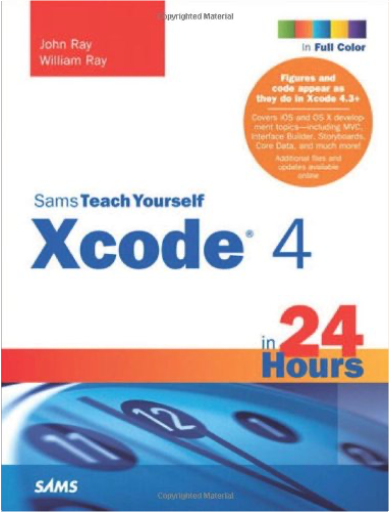
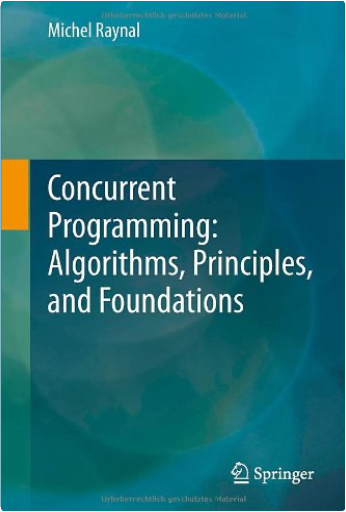
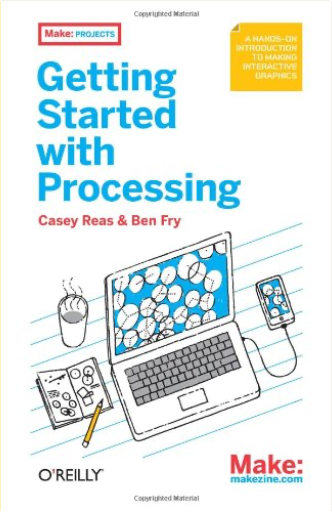
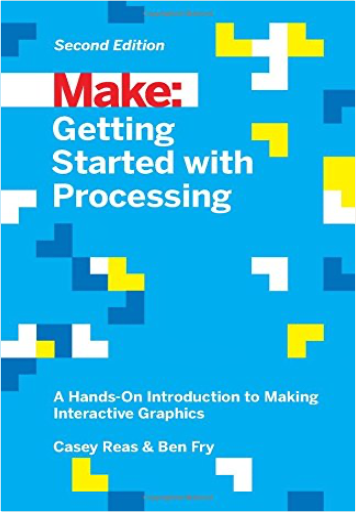
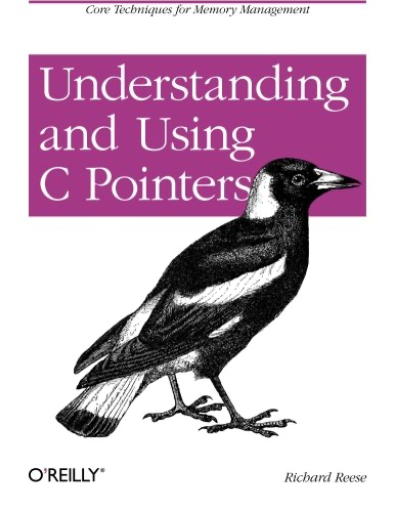
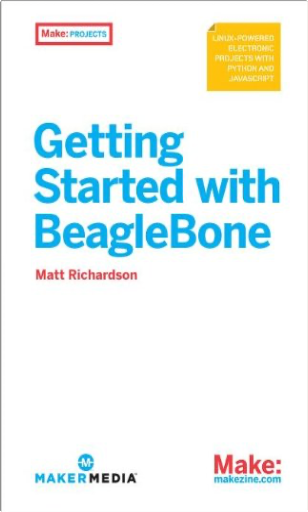
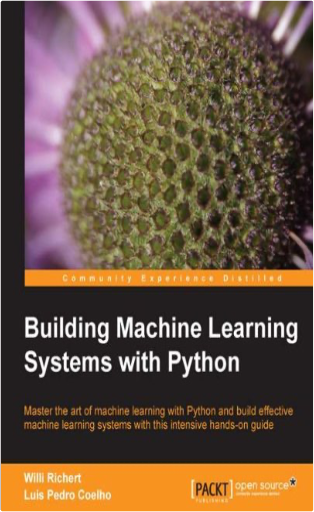
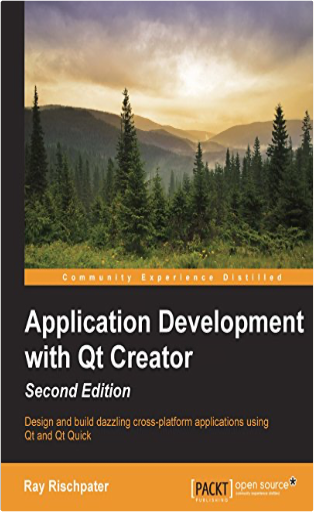
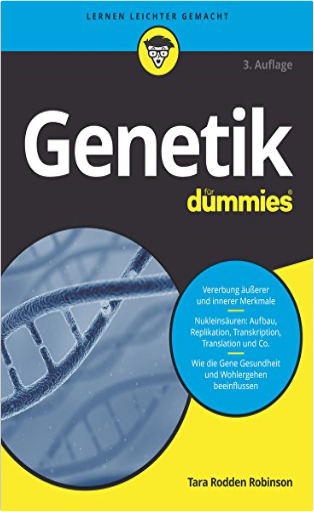

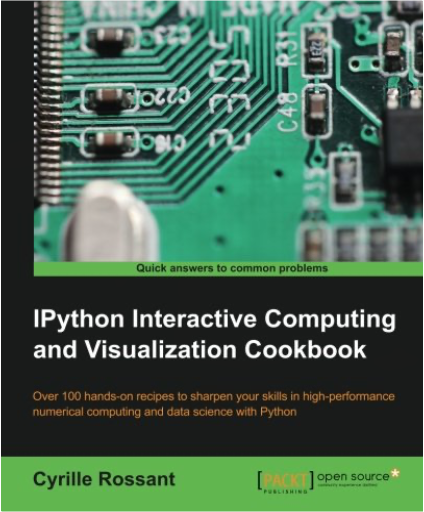
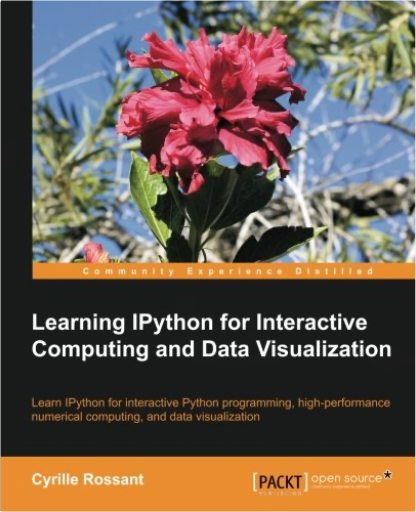
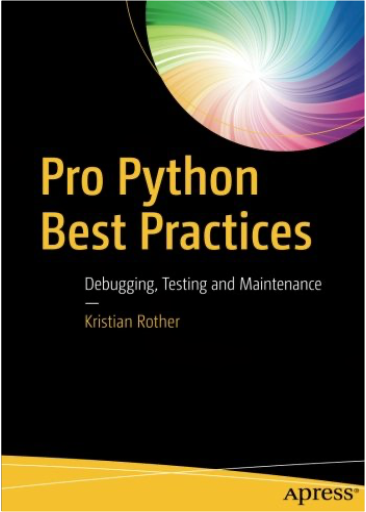


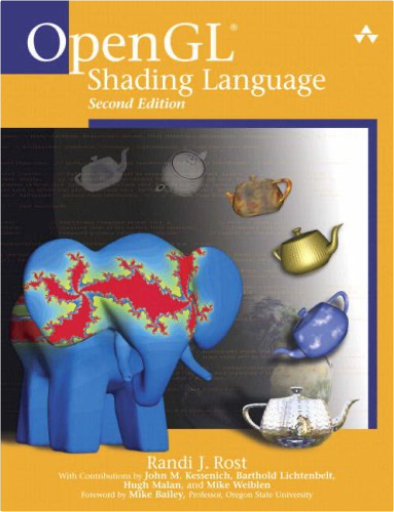
 Made with Delicious Library
Made with Delicious Library